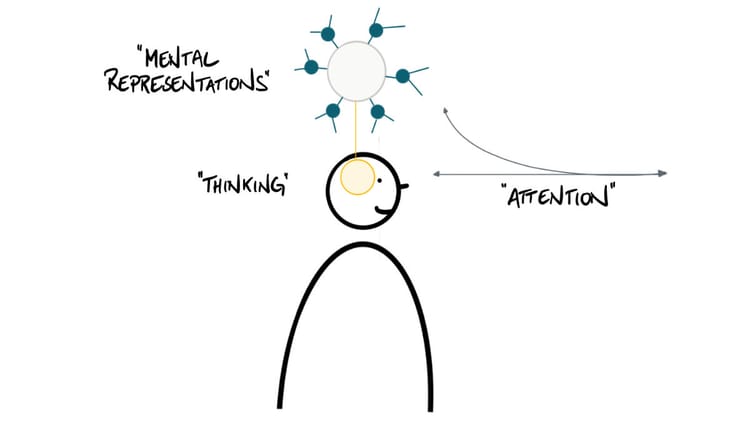2. The Science of Learning: How the Brain Forges New Skills

In the first part of this series, we redefined expertise. We saw that the "magic" of experts isn't an innate gift but the result of building thousands of powerful mental models, or schemata, in their long-term memory.
That leaves us with the most important question for any teacher, course creator, or learner: How does the brain actually build them?
For decades, teaching has been influenced by well-meaning but scientifically unsupported ideas like "learning styles" or the belief that beginners should "discover" insights for themselves. Thankfully, a revolution in cognitive science has given us a much clearer, evidence-based picture of how learning truly works.
The foundation of this new understanding is surprisingly simple, yet it changes everything: All learning is an addition to Long-Term Memory.
To understand how to teach effectively, we must first understand the brain's cognitive architecture for learning. It consists of two memory systems mediated by a third element.
The Cognitive Architecture of Learning
Think of your memory as a system with two key parts: a vast library and a tiny workbench.
1. Long-Term Memory (LTM): The Library
Your Long-Term Memory is the vast, virtually limitless library where all your knowledge is stored. It’s the mental map you use to navigate the world. This "map" contains everything that makes you who you are:
-
Facts (like the population of Germany).
-
Skills (like riding a bike).
-
Beliefs (like "hard work pays off").
-
Specific memories of past events.
The entire goal of a course is to upgrade your students' maps—to add to their LTM so they have a better understanding, can take better actions, and achieve their goals.
2. Working Memory (WM): The Workbench
If LTM is the library, Working Memory is the tiny workbench where all the construction happens. It is the small amount of information you can hold in your mind and actively think about at any given moment.
This is where learning happens. We cannot teach directly to LTM. Instead, we must guide students to process new information on their workbench. As cognitive scientists say, your Long-Term Memory is the residue of your Working Memory. When you think deeply about something, it leaves a trace, and those traces build and refine your schemata in LTM.
This is why learning must be an active process. To learn, students must actively engage with the material on their workbench—making sense of it, solving problems with it, and connecting it to what they already know.
The Catch: The Overwhelmed Workbench
Here is the single most important constraint in all of teaching: Working Memory is severely limited and easily overwhelmed.
While it can hold about 5-7 familiar "chunks" of information, it can only handle about 2-3 new, unfamiliar elements at a time. For a beginner, everything is new. This means that learning is overload by default.
This is the central insight of Cognitive Load Theory, a groundbreaking framework that urges educators to actively manage the mental load placed on a student's Working Memory.
Unfortunately, this is where many expert teachers fail, due to a phenomenon called Expert Blindness. Once you become an expert, your powerful schemata make complex tasks feel simple and automatic. You can no longer remember what it was like not to know. You severely underestimate how much knowledge is involved in an activity and, as a result, you overwhelm your students by assuming "they should know this".
3. Attention: The Spotlight on the Workbench
So, how do we guide what students think about on their limited workbenches? The tool for this is Attention.
What we pay attention to is what we hold in our Working Memory. As a teacher, your job is to direct that spotlight of attention as precisely as possible during lectures, videos, and exercises. The more precisely you can guide their attention to what matters—and away from what doesn't—the higher the quality of their thinking, and the more effectively they will build durable Long-Term Memory.
What Good Teaching Is, According to Science
With this model, we can now define good course creation with scientific clarity. It is the art of designing a process that helps people upgrade their mental maps of the world.
This is achieved by building powerful schemata in their Long-Term Memory. You do this by architecting a learning journey that:
-
Makes students actively think about the core concepts you are teaching.
-
Carefully manages cognitive load so their Working Memory is challenged but not overwhelmed.
-
Directs their attention to the most critical information.
The result is what we call powerful knowledge—knowledge that is durable (it lasts), deep (it's well-organized), and accessible (it can be used when needed).
Now that we understand the "what" (expertise is schemata) and the "why" (the science of how we build them), we are ready for the final step: the "how." How do we apply these principles to design and build beautiful online courses that actually work?